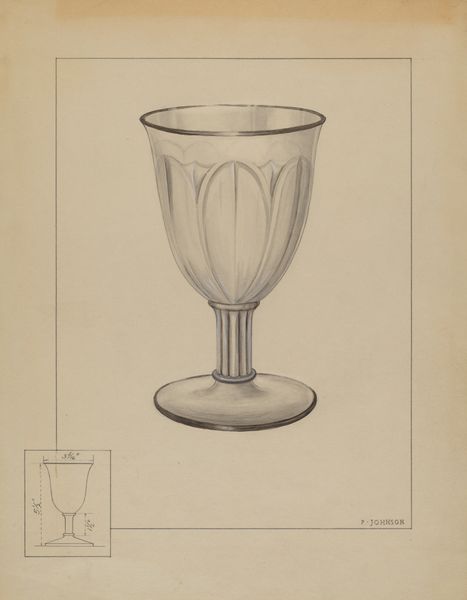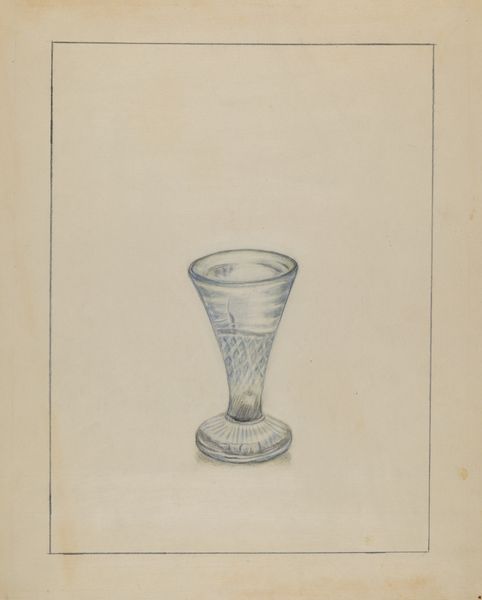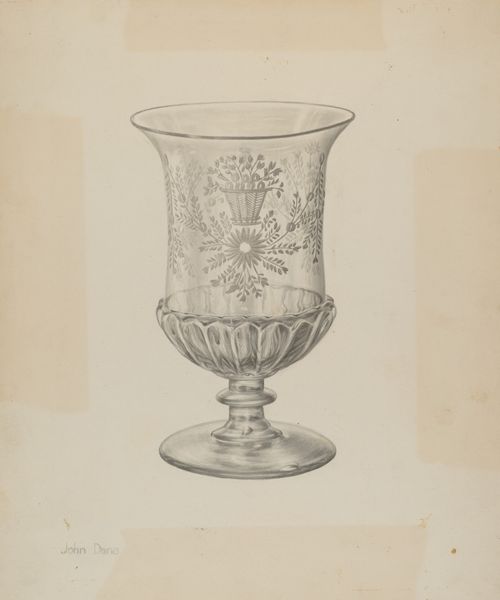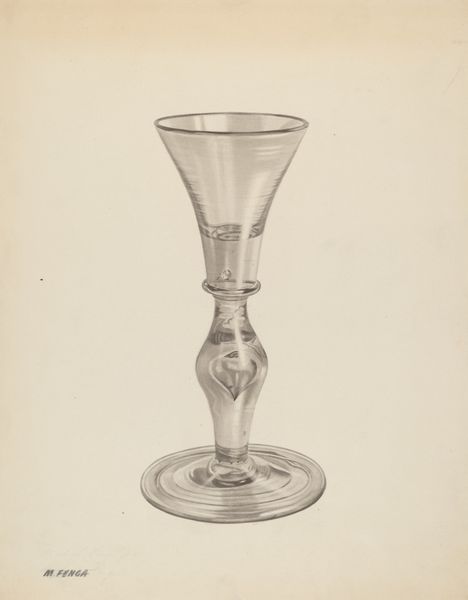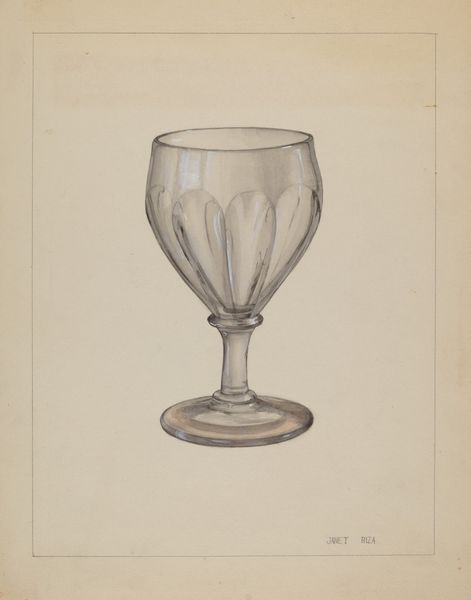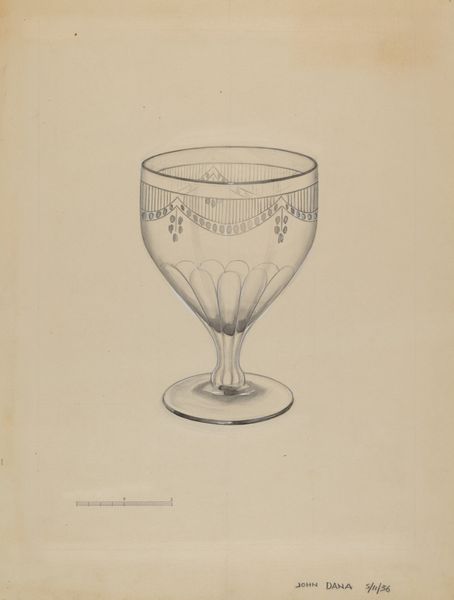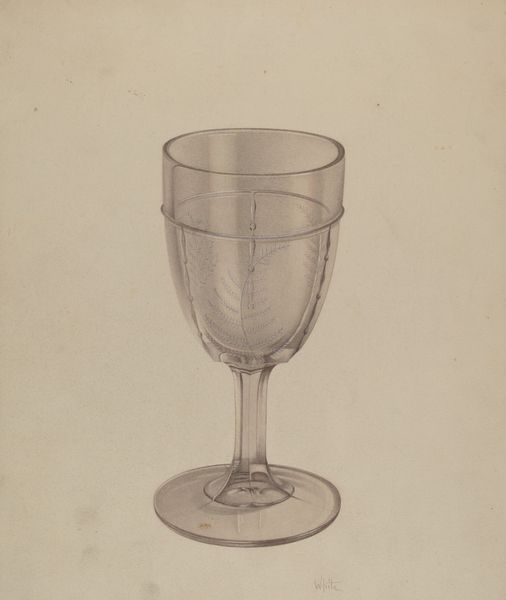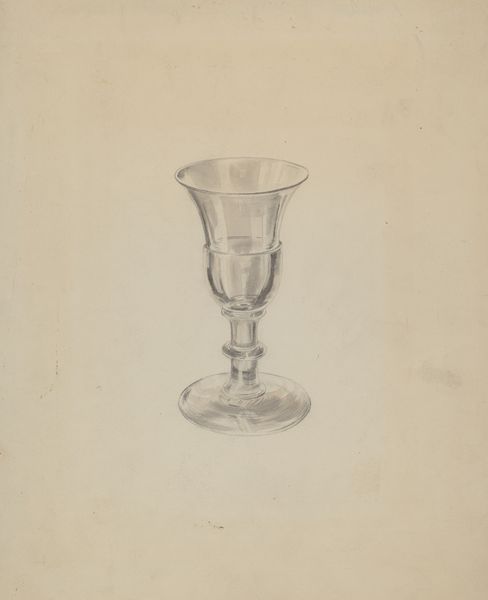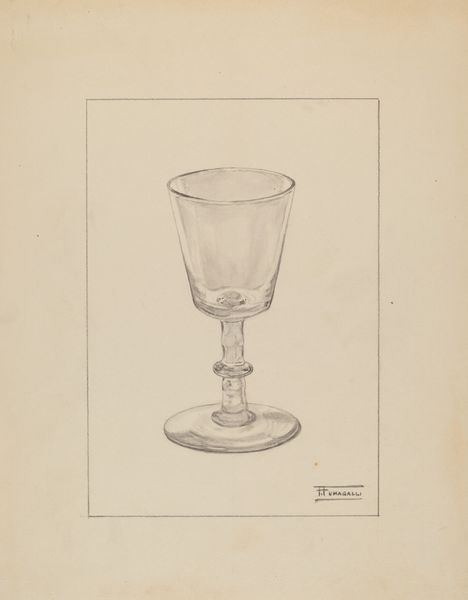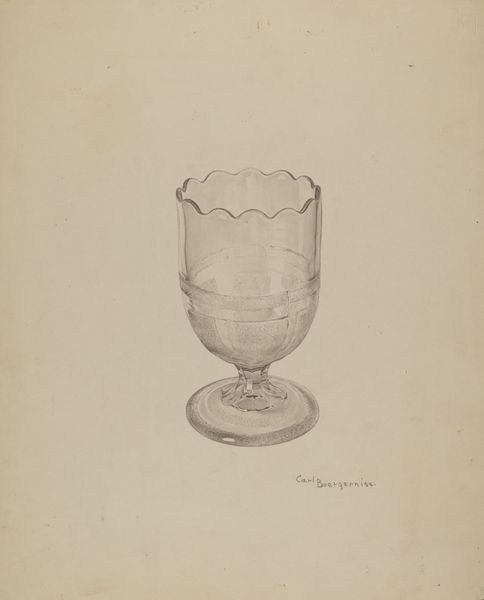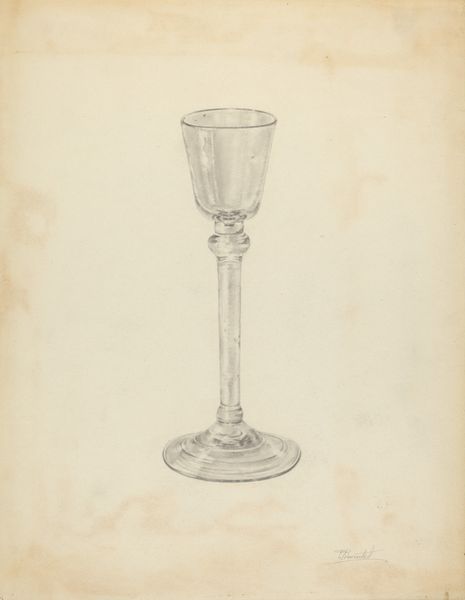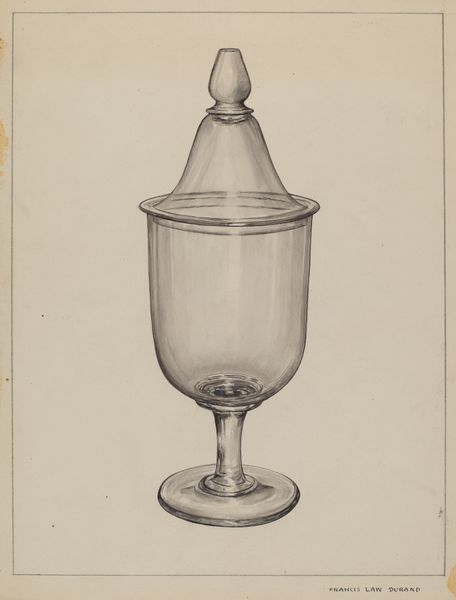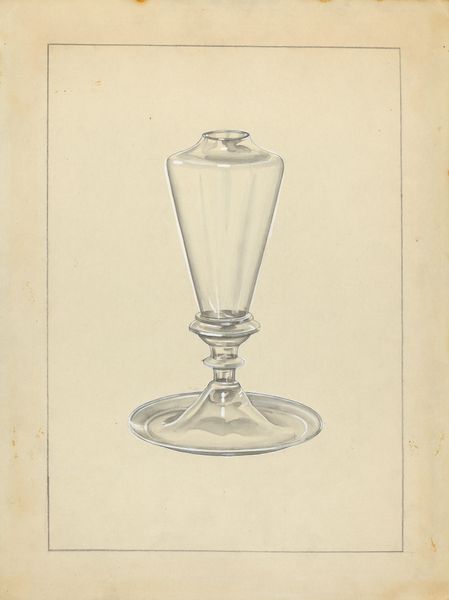
drawing, paper, pencil
#
drawing
#
paper
#
pencil drawing
#
pencil
#
modernism
Dimensions: overall: 29.7 x 22.7 cm (11 11/16 x 8 15/16 in.)
Copyright: National Gallery of Art: CC0 1.0
Curator: The first thing I see is an almost haunted translucence. A sense of the ephemeral captured in a goblet. It's surprisingly melancholic, wouldn't you say? Editor: Perhaps, but let's bring some context. This is "Goblet," a pencil drawing from around 1936 by Philip Johnson. Looking closely, you can see not only the glass itself rendered on paper, but a technical drawing on the lower left corner indicating design specifications. A testament to early modernism, the style evokes functionalist design with classical elements. Curator: Oh, I do love knowing things like that. Still, I stand by my ghost observation. It makes me think about those austere modernist houses, the kind where even your drinkware is saying something very pointed about status and aspiration. Editor: Indeed, a loaded vessel! Drinking, historically, is so ritualized. Johnson was an elite. Reflecting on what would fill that glass is interesting. Perhaps not just liquid, but something like power and privilege? Notice how the lines are so clean, restrained, yet the cup form itself is sensuous. These lines, though spare, do a great deal to elevate what is otherwise utilitarian. Curator: That's the part I'm talking about. The emotional reserve makes me almost nervous, like something about to be exposed! All this in the service of containing water! Editor: Although a drawing in monochrome, one can glean details such as the vertical facets rising on the sides of the cup itself, a beautiful and delicate counterpoint to its strong architectural foundation. It marries visual precision to aesthetic appreciation. A still life imbued with symbolism. Curator: So well said! The drawing hints at abundance while feeling, simultaneously, like emptiness. Almost yearning to be filled! The question, as you put, being: filled with what? Editor: It's a testament to how objects become extensions of ourselves, coded with meanings beyond the functional. A goblet, just like this, reflecting the complexities of culture. Curator: In the end, perhaps this cup runneth over with more questions than answers, which for me, is just fine! Editor: And sometimes the silences within that reflection give us insight to ourselves, to our cultural positions, and how we engage with beauty as a form of language.
Comments
No comments
Be the first to comment and join the conversation on the ultimate creative platform.
